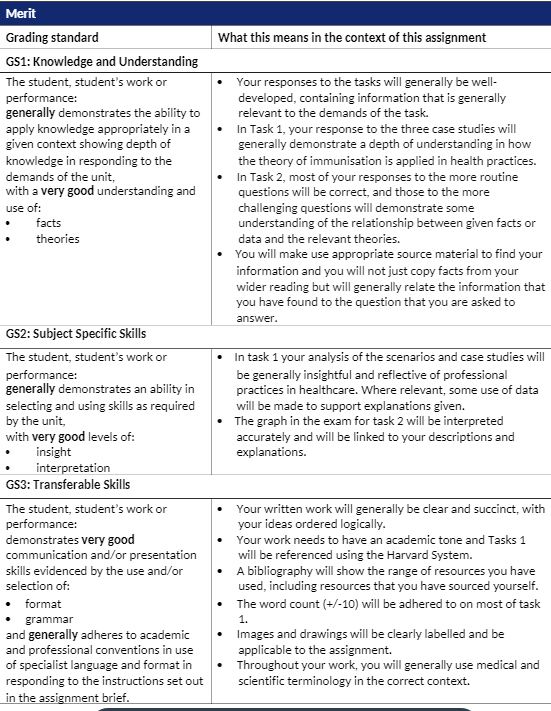CBB550 Assignment instructions:
This assignment consists of two tasks.
CBB550 Task 1 – Workbook and Case Study Analysis (AC2.1, 2.4, 4.2, 4.3, 4.4, 5.1, 5.2)
This task requires you to respond to questions including some about a variety of case studies. It includes questions requiring short answers and some where you will need to explain your answer in the context of the case study information. There are also questions where you will need to draw or annotate diagrams.
Task 1 guidance:
- The word limit for the workbook is 1500 words.
- You need to be succinct in your answers while also achieving the depth of information required.
- Where a long written response is required, you should write in paragraphs.
- Where you use information or facts from a source such as a textbook or website, your sources should be referenced in-text and in a bibliography, following the conventions of the Harvard style. The bibliography is excluded from the word limit.
CBB550 Task 2 – Test (AC 1.1 2.2, 2.3, 3.1, 3.2, 4.1)
End of unit test (‘closed-book’) of 1.5 hour duration on the body’s defence mechanisms. The test will take place on [date] at [time]. The test conditions can be found at the end of the brief. The amount of space given for answers is an indication of the expected length of your answer, where applicable minimum word counts will be given.
workbook Test rules and procedures (task 2)
- Arrive for the test early. If you arrive after the test has started, you will not be permitted to enter the test room as it would disturb your fellow learners.
- Mobile telephones must be switched off and placed out of reach.
- You will be provided with a question and answer booklet.
- You are permitted to use some pens, pencils, a ruler and a rubber. You may have a bottle of water on your desk.
- All your other personal belongings need to be left at the front of the room away from the desks. You are not permitted to bring any notes into the test.
- Once the test has started you must not communicate with anyone except the invigilator. If you need to communicate with the invigilator, you should raise your hand and wait for her/him to come to you.
- You need permission from the invigilator to leave the test room (e.g. to go to the toilet). If you leave the room then you may not take the question paper or your answer booklet with you. If you leave without permission then you will not be permitted to re-enter the test.
- You should not leave your desk until all your papers/scripts have been collected. You should not speak to your peers until you have left the test room.
- Any learners found to have broken the rules of test will have their scripts automatically invalidated. This means that you will have to undertake a resubmission test.
Are You Looking for Answer of CBB550 Assignment
Order Non Plagiarized Assignment
Preparing for the test
- Make sure that you have read the assessment criteria (1.1, 2.2, 2.3, 3.1, 3.2, 4.1) and grade guidance so that you know what to revise and what is expected from your answers.
- If you normally need to be contactable by phone, ensure that those who may contact you are aware of the times that you will be in the test and will not have access to your phone.
- If you require special conditions for sitÝng tests (e.g. extra time), inform your tutor by [DATE] so that they can confirm whether you are eligible for these accommodations and make appropriate arrangements.
Unit specification
| Learning outcomes | Assessment criteria |
| This is what you will learn on the unit. |
This is what you must be able to demonstrate that you can do in your assignment in order to achieve the unit.
|
| The learner will: | The learner can: |
|
1. Understand a variety of diseases, disorders, syndromes, and conditions.
|
1.1. Differentiate between diseases, disorders,syndromes, and conditions giving examples ofeach. |
| 2. Understand pathogens and how they cause disease. |
2.1. Explain the characteristics of bacteria and viruses that make them pathogens. 2.2. Explain how the body tries to prevent pathogenic entry into the body. 2.3. Evaluate factors that affect the efÏciency of the body’s first line of defence. 2.4. Explain how pathogens spread between people. |
| 3. Understand defensive functions of the blood. |
3.1. Explain the process of blood clotÝng as a defence function. 3.2. Explain phagocytosis as a defence mechanism |
| 4. Understand immunity in humans. |
4.1. Interpret antigen/antibody interactions. 4.2. Explain natural/acquired immunity and active/passive immunity. 4.3. Explain the basis of immunisation and evaluate its efÏcacy in a range of contexts. 4.4. Explain essential differences between humoral and cellular responses as shown by B-lymphocytes and T-lymphocytes. |
| 5. Understand the inheritance of genetic diseases. |
5.1. Describe two examples of genetic diseases, one caused by a dominant gene, the other by a recessive gene. 5.2. Explain how these diseases are inherited, andthe chance of a baby inheriting the disease in each case. |
Grading standards
